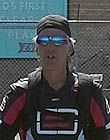|
|
This topic comprises 3 pages: 1 2 3
|
|
Author
|
Topic: Additional uses for the JNIOR
|
|
|
|
|
|
|
|
|
|
|
|
|
|
|
|
|
|
|
|
|
|
|
Bruce Cloutier
Expert Film Handler

Posts: 161
From: Gibsonia, PA, USA
Registered: Aug 2016
|
 posted 01-09-2019 11:37 AM
posted 01-09-2019 11:37 AM





The JNIOR Series 3 used/uses the Dallas/Maxim-IC DS80C400 processor. Basically this was an 8051 variant that booted up a built-in Java Virtual Machine. From the manufacturer this would run a single Java process. We hacked the thing to make it multi-tasking and created some inter-process communications. This allowed us the develop an application like CINEMA and still run other programs. Outside of the fixed firmware in the processor everything was done through Java.
The Series 4 currently is based upon the Renesas RX63N processor. Here we developed the JANOS operating system to mimic the environment that eventually existed on the JNIOR Series 3. Only, much better.
The Series 3 employed the DS80C400 processor which is an 8-bit processor that ran at 36 MHz and everything had to be in Java (including operating system tasks, network, etc).
The Series 4 employs the Renesas RX63N which is 32-bit running at 100 MHz where all of JANOS is implemented through an optimized C compiler.
The difference is more than a 200X improvement in performance. JANOS can execute one or more instances of our JVM (each running program is its own instance). So applications are still in Java but perform at a whole different level and can take on much more sophisticated tasks.
At the same time JANOS can manage the network, make secure connections, support a full-featured web server with PHP-like server-side scripting, support a websockets API, handle FTP, and Telnet command line tasks. All done at the lowest level not burdened by any JVM requirement.
So back in the 90's Sun Microsystems was pushing Java as a means to network enable everything. They made the JVM public and encouraged device manufacturers to create processors that can be used to embed the JVM in almost everything. The DS80C400 was part of a series of processors that Dallas Semiconductor introduces along those lines. Other component manufacturers had their own.
Obviously I like to boast about it and we need to sell more of them but... I am really here to help anyone with their JNIORs that they already have. I have to admit we do cringe when a Series 3 issue comes along. We are spoiled now with the Series 4.
Aside from offering support, many of you have JNIORs sitting there that can be easily used to do something additional.
For instance, you might have one doing not much more than flipping house lights. You can add an environmental sensor to it and track booth temperature and humidity. Perhaps issuing a warning email if things get out of hand and, well, you're shortening your bulb life or something. You could wire A/C power (not from the UPS) to an input to know when power to the building has gone down. I know, now I have the integrators cringing.
I am always fishing for ideas. A lot of people have done a lot of different things with a JNIOR. Some of that is just interesting.
| IP: Logged
|
|
|
|
|
|
|
|
|
|
All times are Central (GMT -6:00)
|
This topic comprises 3 pages: 1 2 3
|
Powered by Infopop Corporation
UBB.classicTM
6.3.1.2
The Film-Tech Forums are designed for various members related to the cinema industry to express their opinions, viewpoints and testimonials on various products, services and events based upon speculation, personal knowledge and factual information through use, therefore all views represented here allow no liability upon the publishers of this web site and the owners of said views assume no liability for any ill will resulting from these postings. The posts made here are for educational as well as entertainment purposes and as such anyone viewing this portion of the website must accept these views as statements of the author of that opinion
and agrees to release the authors from any and all liability.
|

 Home
Home
 Products
Products
 Store
Store
 Forum
Forum
 Warehouse
Warehouse
 Contact Us
Contact Us




 Printer-friendly view of this topic
Printer-friendly view of this topic










![[Smile]](smile.gif)

![[Razz]](tongue.gif)



